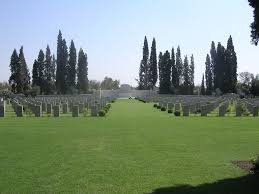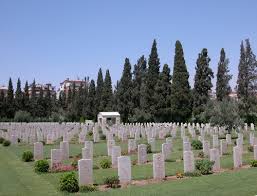Dennis Hayward Stanley
1897 - 1918
Researched and written by June MAGILL
Dennis’s parents Alfred STANLEY and Sarah HAYWARD were both born in Dark Lane, Dawley, Shropshire, Alfred in 1857, and Sarah in 1859. There they grew up together as children and neighbours.
In 1878, Alfred and Sarah married in their home town of Dawley. Their marriage was registered at Shifnal Registry Office (Marriage Register Volume 6A page 878).
Between the 1881 and 1891 censuses, Alfred and Sarah moved to Staffordshire and settled in Hednesford. Dennis was one of a total of twelve children born to Alfred and Sarah in Hednesford. Dennis was a twin, and he and his twin sister Winifred were born in 1897. Dennis was given his mother’s maiden name Hayward as his middle name. Dennis and Winifred’s births were registered at Cannock Registry Office (Birth Register Volume 6b Page 502).
Between 1897 and 1901, Dennis’s family moved to Regent Street, Church Gresley, Derbyshire. There, Dennis aged 4, is recorded on the 1901 Census with his parents Alfred and Sarah, elder siblings Enoch, Miriam, Beatrice, Percy and his twin sister Winifred. His father was the Deputy Manager of a mine, and his eldest brother Enoch was a Coal Miner, Hewer.
Extract from the 1901 census
Picture 1
Between 1901 and 1911 Dennis and his family had moved back to his birth town of Hednesford. At 2 West Hill, Hednesford, Dennis aged 13, is recorded on the 1911 census with his parents Alfred and Sarah, elder siblings Enoch, Beatrice, Percy and his twin sister Winifred. His father Alfred was a Colliery Fireman, and his brothers Enoch and Percy were also working down the mine. His mother Sarah was running a small shop. His father declared that during their marriage, they had 12 children, 8 of which were still living, and 4 of which had died. Dennis was still attending school, presumably West Hill Primary.
Extract from the 1911 census
Picture 2
After leaving school, Dennis may very well have followed his father and brothers down the mine.
In 1916, Dennis enlisted with the Staffordshire Yeomanry Battalion (Queens Own Royal Regiment) at Hednesford. He became a Private and had two numbers 3866 and 300984.
He was with the Household Cavalry & Cavalry of the Line (Yeomanry & Imperial Camel Corps). Following his training, Dennis was sent to Africa, where he served in Egypt.
At the start of the First World War, the British Army forces serving in Egypt did not possess their own camel formation. The Imperial Camel Corps Brigade was a Camel Mounted infantry brigade that the British Empire raised in December 1916 for service in the Middle East. From a small beginning the brigade eventually grew to four battalions, one battalion each from Great Britain and New Zealand and two battalions from Australia. It consisted of 4,150 men and 4,800 camels. Support troops included a mountain artillery battery, a machine gun squadron, Royal Engineers, a field ambulance, and an administrative train.
The ICC became part of the Egyptian Expeditionary Force, and fought in several battles and engagements, in the Senussi Campaign, the Sinia and Palestine Campaign and in the Arab Revolt.
(Extracts from Wikipedia)
Early in 1918, the ICC moved to the area of the Jordan valley and took part in the attack in March and April. The First Battle of Amman was unsuccessful; after three days of battle the British were unable to break through the Ottoman defences around the city and had to withdraw. The 4th (Anzac) Battalion did succeed in capturing Hill 3039 overlooking the city and managed to hold out for twenty-four hours in the face of artillery and infantry attacks, until ordered to withdraw. During the Second Transjordan attack on Shunet Nimrin and Es Salt, the camel brigade was assigned the western defence of the Jordan River ford at Umm esh Shert defending the left flank of the 4th Light Horse Brigade. The camel brigade was unable to support the light horsemen, which were attacked on the left flank and forced to withdraw. When the EEF advanced out of the Sinai and into Palestine, the change in terrain led to the disbandment of the ICC. In June 1918, the Australian troops were used to form the 14th and 15th Light Horse Regiments. The New Zealand troops formed the 2nd New Zealand Machine Gun Squadron. All three units became part of the 5th Light Horse Brigade. The six British companies remained part of the ICC for a while longer. Two of them fought with T. E. LAWRENCE in the Arab Revolt, and in July 1918 carried out operations sabotaging the Hejaz railway line. However, no reinforcements were assigned and the six remaining companies were reduced in strength to two before they were eventually disbanded in May 1919.
Over two years service, the brigade suffered 246 men killed, 106 British, 84 Australians, 41 New Zealanders, and 9 men from India.
(Extracts from Wikipedia)
Dennis died on the 18th October 1918 whilst serving in Egypt. He was buried at the Damascus Commonwealth War Cemetery.
Picture 3
Picture 4
Dennis is recorded as Private D H STANLEY – 300984, 1st / 1st, Staffordshire Yeomanry. The reference for his grave is B.118
Plan of the Damascus Commonwealth War Cemetery - Private Dennis Hayward Stanley's grave is at reference B.118
Picture 5
Private Dennis Hayward Stanley is remembered in Egypt as well as on the War Memorial in Hednesford.
Hednesford War Memorial
Picture 6
The panel from the Hednesford War Memorial on which the name of Private Dennis Hayward Stanley is commemorated.
Picture 7
Dennis was awarded the Victory Medal and the British War Medal.
Picture 9
Picture 8
British Army WWI Medal Rolls Index Card, 1914-1920, for Private Dennis Hayward Stanley
Picture 10
A memorial to the Imperial Camel Corps was unveiled on the 22 July 1921, on the Thames Embankment in London. On one side it is inscribed with the names of all the members of the corps who died during the war, while on the front is the sentiment: To the Glorious and Immortal Memory of the Officers, N.C.O's and Men of the Imperial Camel Corps – British, Australian, New Zealand, Indian – who fell in action or died of wounds and disease in Egypt, Sinai, and Palestine, 1916, 1917, 1918. The monument also lists all the battles and engagements fought by the corps, including those during 1918 at Amman, Jordan Valley and Mudawar [Hedjaz].
Extract from Wikipedia https://en.wikipedia.org/wiki/Imperial_Camel_Corps_Memorial
Picture 12
Picture 11
Commonwealth War Graves Commission certificate commemorating the life and service of Private Dennis Hayward Stanley
Picture 13
Item, Source and Credit
1. Extract from the 1901 census © Ancestry
2. Extract from the 1911 census © Ancestry
3. Photograph of Damascus Commonwealth War Cemetery © Commonweath War Graves Commission (https://www.cwgc.org/)
4. Photograph of Damascus Commonwealth War Cemetery © Commonweath War Graves Commission (https://www.cwgc.org/)
5. Plan of Damascus Commonwealth War Cemetery © Commonweath War Graves Commission (https://www.cwgc.org/)
6. Photograph of Hednesford War Memorial © Burntwood Family History Group (Alan Betts)
7. Photograph of the panel from the Hednesford War Memorial on which the name of Private Dennis Hayward Stanley is commemorated © Burntwood Family History Group (Alan Betts)
8. Photograph Victory Medal © http://www.debenhamfamilyhistory.org.uk/victorymedal.htm
9. Photograph British War Medal © Wikipedia
10. British Army WWI Medal Rolls Index Card, 1914-1920, for Private Dennis Hayward Stanley © Ancestry
11. Photograph of the Imperial Camel Corps Memorial on the Thames Embankment in London © Modern Conflict Archaeology website (http://modern-conflict-archaeology.blogspot.co.uk/2012/03/imperial-camel-corps-icc-monuments.html)
12. Photograph of the Imperial Camel Corps Memorial on the Thames Embankment in London © London Remembers website (https://www.londonremembers.com/memorials/imperial-camel-corps)
13. Commonwealth War Graves Commission certificate commemorating the life and service of Private Dennis Hayward Stanley © Commonweath War Graves Commission (https://www.cwgc.org/)






